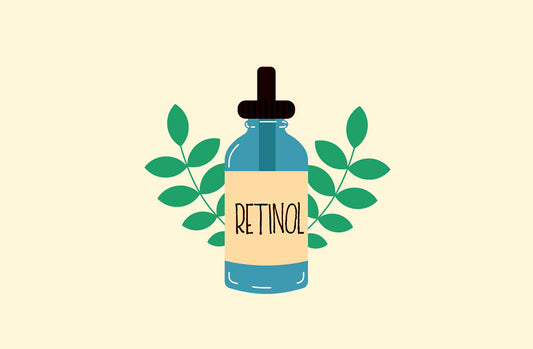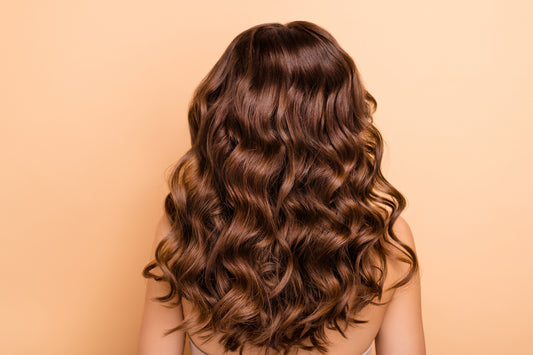Anyone who has experienced hair loss can understand the frustration of trying to figure out exactly what is leading to this shedding. Let’s help you determine what unexpected triggers may be affecting your strands, and discuss how to stop hair loss in its tracks.
What Does Severe Hair Loss Look Like?
Severe hair loss will look different from person to person, as it can depend on the underlying trigger. In general, hair loss refers to any thinning that is more noticeable than typical daily hair shedding. It is normal to shed between fifty to one hundred hairs a day. If you notice your body shedding significantly more than that, it is considered excessive hair shedding.1 Some people may notice hair loss affecting the entire scalp, whereas others may see thinning concentrated along the part or hairline.
Hair loss can be a sign of an underlying medical condition. If you experience sudden, rapid hair loss, round and patchy hair loss, shiny and white scarred areas, loss of body hair, severe itchiness, and/or inflammation, you should meet with a medical professional who can help you address the root cause.
Keeping all of this in mind, here are some of the most common causes of hair loss that may be affecting your hair.
1. Stress
Stress can cause telogen effluvium, a form of hair shedding where a certain trigger pushes a large number of the hairs into the resting phase of the hair growth cycle, leading to an increase in shedding.2 Typically, this type of hair loss will occur approximately 90 days after a stressful event.
More often than not, stress-induced hair loss resolves on its own, so long as the stress is addressed and doesn’t become chronic. That said, there are steps you can take to support the regrowth process and return hair back to its pre-telogen effluvium state. We’ll cover a few tips below.
2. Hair Styling Techniques
If you regularly style your hair in high ponytails, cornrows, weaves, or other tight hairstyles that pull on the strands, you may be dramatically increasing your risk of hair loss. This type of loss is referred to as traction alopecia, where continuous tension on the root leads to shedding, typically around the hairline.3
When caught early, hair loss from traction alopecia can be reversible. However, if not addressed, it can become permanent. In order to prevent future loss, you must find gentler, looser styles that don’t pull on and damage the follicles.
3. Heat Tools
As you may already know, hot tools (such as flat irons and curling wands) can dry out and weaken the strands. A lesser-known fact is that they can also contribute to hair loss.
The pulling action caused by flat irons, hot rollers, curling wands and similar tools can lead to traction alopecia.4 By weakening the hairs, these types of tools can also cause breakage and split ends, which may make the hair appear thinner and damaged. Try to limit your usage of these types of styling tools. When you do choose to use them, make sure you use a heat protectant.
4. Medication
Some medications come with a potential side effect of hair loss. Hair loss is a well-known side effect of chemotherapy drugs, but there are other medications that can also trigger some degree of thinning, including beta-blockers, antidepressants, and isotretinoin. If you suspect a medication may be causing your hair loss, talk to your doctor about how you may be able to prevent future loss.
5. Female & Male-Pattern Baldness
In both men and women, male and female-pattern baldness (also known as androgenetic alopecia) is one of the most common forms of hair loss.5 It’s often related to genetics and hormonal fluctuations.
When left untreated, androgenetic alopecia can be permanent. However, if caught early, you can help slow down future loss, and may be able to regrow hair.
6. Hormones
Fluctuations in hormone levels can also have a major effect on hair, especially in women. Many women experience excessive shedding after giving birth, thanks to the shift in hormones.6 This generally peaks around the four month mark postpartum, but is typically temporary. Most women who deal with postpartum hair loss regain their typical fullness before their child’s first birthday.
Additionally, many women experience thinning during menopause, as well as after stopping birth control pills.7,8 In both of these cases, the loss typically isn’t permanent.
UnTangled Essentials Kit
• Engineered to work in tandem
• Visibly fuller hair in 90 days
7. Vitamin Deficiency
Diet can play a major role in hair health, and when we aren’t getting the nutrients we need, our hair can suffer. So which vitamin deficiency causes hair loss? Deficiencies in vitamins B2 (riboflavin), B7 (biotin), B9 (folate), B12, and D have all been tied to hair loss.9 A deficiency in minerals like iron, zinc, and selenium can also contribute.
Best Ways to Treat Sudden Hair Loss
If you’d like to slow down loss and promote new hair growth, there are a few products and steps you can add to your routine to support your strands and follicles. Here’s what we recommend for treating sudden hair loss at home.
Massage
Scalp massages are free, easy, and effective. In one study, researchers found that daily four-minute scalp massages promoted hair growth, helping participants achieve fuller hair after 24 weeks.10
Foundation Skincare Supplements & Serum
Using the Foundation Skincare UnTangled Supplement and Hair Serum in tandem will help you effectively tackle hair loss from the inside-out. The topical serum nourishes follicles at the source to help encourage the growth of strong, healthy hair. At the same time, the supplement addresses nutritional deficiencies while giving the body the tools it needs to revitalize the follicles and promote new growth.
Natural Oils
Both rosemary and peppermint essential oils have been proven to help support growth to counteract the effects of loss.11,12 Mix a few drops of one (or both) of these oils into a carrier oil and massage the mixture into your scalp. You can also add them to your shampoo and conditioner.
Consistency
Keep in mind that none of these solutions will lead to instant results. Consistent, regular implementation is essential for achieving the results you desire. With a bit of patience, you can work toward reviving your strands.
Effectively Stop Hair Loss in its Tracks
As a final note, along with using targeted at-home treatments, remember that addressing the root cause is key to stopping loss and preventing future hair thinning. If necessary, meet with a medical professional who can help you tackle the cause so that you can get your hair back to its normal state.
References:
-
https://www.aad.org/public/diseases/hair-loss/insider/shedding
-
https://www.ncbi.nlm.nih.gov/pmc/articles/PMC4606321
-
https://www.ncbi.nlm.nih.gov/books/NBK470434/
-
https://perspectivesinmedicine.cshlp.org/content/4/3/a013615.full
-
https://www.ncbi.nlm.nih.gov/books/NBK430924
-
https://www.aad.org/public/diseases/hair-loss/insider/new-moms
-
https://pubmed.ncbi.nlm.nih.gov/4736624/
-
https://www.ncbi.nlm.nih.gov/pmc/articles/PMC7432488/
-
https://www.ncbi.nlm.nih.gov/pmc/articles/PMC6380979
-
https://www.ncbi.nlm.nih.gov/pmc/articles/PMC4740347/
-
https://pubmed.ncbi.nlm.nih.gov/25842469/
-
https://www.ncbi.nlm.nih.gov/pmc/articles/PMC4289931/





